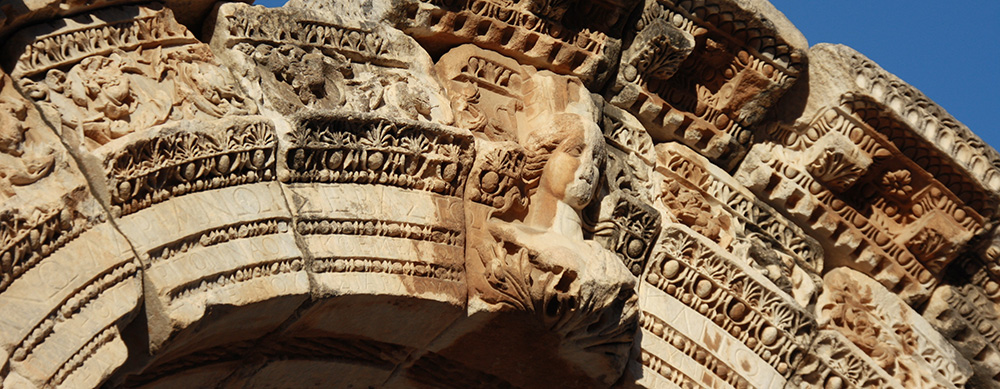Ancient Ephesus and Miletus
Description
This is a truly spectacular day. We leave the port city
of Kusadasi for Ephesus, one of the 12 cities of Ionia.
This is a stunning marvel in the hills above the Aegean
and one of the world’s largest and important open-air
archaeological museums. It was also the home to
one of the Seven Wonders of the Ancient World, the
Temple of Artemis.
Ephesus was founded by the Ancient Greeks around
2000 BC. It was the wealthiest of the Ionian cities
and became one of the key cultural centres in the
Mediterranean. The city was dedicated to the goddess
Artemis. The temple built in her honour took 120 years
to complete. Ephesus later became the second largest
city in the Roman Empire and is rivalled only by the
Forum and the Acropolis as one of the most complete
classical cities in Europe. Even so, only 13 per cent of
Ephesus has been uncovered.
We wander through the Odeon and the Prytaneion,
stroll the marble colonnades of Curetes Street to
visit Trajan’s Fountain, Hadrian’s Temple, Scholastica
Baths and the astonishing Terrace Houses. Nearby
is the spectacular Library of Celsus, almost entirely
reconstructed, and the Agora. The Great Theatre of
Ephesus where St Paul once preached, held crowds
of up to 24,000. Today it still hosts concerts and other
performances.
Our tour takes us to the Rug Village
for lunch and a demonstration of traditional Turkish
carpet weaving. We then head for the ancient coastal
city of Miletus, another of the greatest and wealthiest
cities in Ancient Greece and one of the first to mint
coins. Homer mentioned Miletus in The Iliad and Paul
preached here on the way back to Jerusalem. There
are many well preserved ruins, including the Temple of
Apollo and a Byzantine church.



